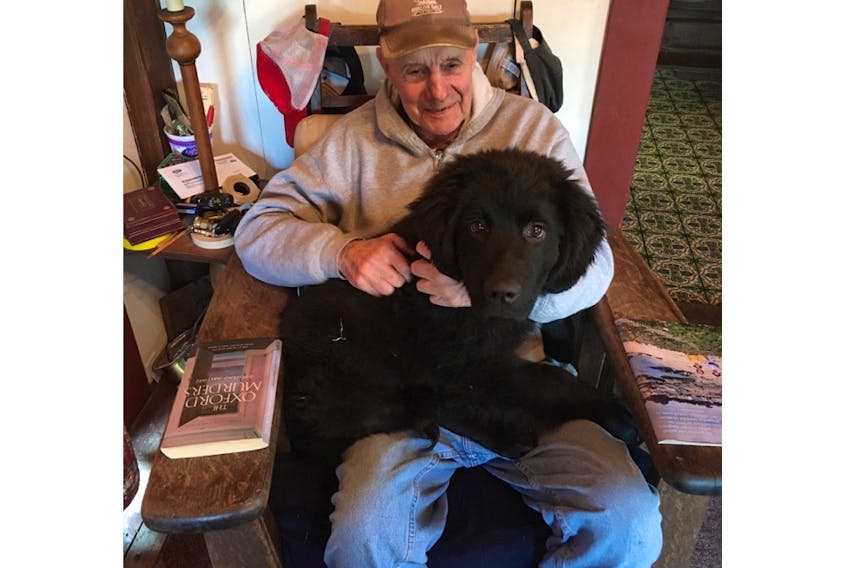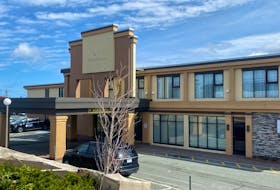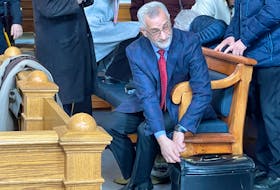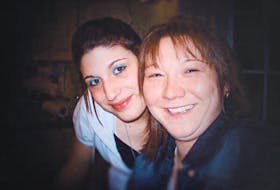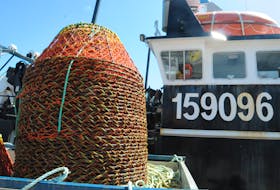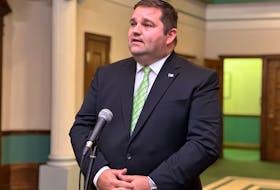ST. JOHN'S, N.L. — When Jim Tuck was a child, he made a museum in the cellar of his parents’ house and invited neighbourhood children to walk through. That early fascination with artifacts — even if it was just childhood junk — foreshadowed the life of a man whose name would become synonymous with archeology.
Tuck uncovered fascinating parts of Newfoundland and Labrador history before he died on May 10 at age 78.
But now, as his family approaches the monumental task of boxing his belongings, they’re uncovering him.
Of course, many of his achievements are well-known: he was the founder of the archeology department at Memorial University, recipient of the Order of Newfoundland and Labrador, and chief archeologist at the Colony of Avalon in Ferryland – a dig that has catalogued about two million artifacts.

He pioneered community-based archeology and oversaw digs that unearthed previously untold parts of the province’s history, including the oldest known burial mound in North America at L’Anse Amour.
When he wasn’t immersed in his work, the family “had stolen time with him,” his daughter, Robin Tuck, 50, recalls.
In his retirement, Tuck lived at the family’s summer home on Martha’s Vineyard. From there, his wife, Lynn, and daughters Robin and Laura spoke with The Telegram by phone as they took a break from sorting through his things.
During the summer months, Tuck was often at work on a dig, so Lynn and the children spent summers at their Vineyard Haven home.
“I remember asking (Mom) once, ‘Don’t you miss Dad? Don’t you want him to come with us?’” said Robin.
“And she said, ‘Robin, how could I hold him back? He was born to do this. Why would I stand in his way?’ And I thought that was pretty amazing for a wife,” she said, her voice wavering.
The family is packing not only Tuck’s things, but everything.
They’ve put the Massachusetts home on the market, and Lynn and Robin are moving back to Newfoundland.
“We were all kind of just talking about it in the evenings here, and Dad really wanted to go home. So, we’ll bring him home. I feel like his spirit’s not here anymore, anyway. He’s up there (in Newfoundland).”
Tuck was born in Buffalo, N.Y., on June 28, 1940.
The family settled in Newfoundland when he took an assistant professor position at Memorial University in 1967.
“He was in my high school,” recalled Lynn, 75, about how a teenage crush became a marriage.
“My girlfriend’s house was on Main Street, and I used to see this Model A go down the road and that’s where I thought, oh, wow, you’ve got to go see him,” she laughed softly.
By the time the young couple arrived in Newfoundland, they had two children. Robin was born shortly after, while Tuck was working in Port au Choix uncovering the burial ground of Maritime Archaic people.
Lynn recalls spending two months living at the Holiday Inn before they moved into a home on Mount Scio Road.
“I loved it, and I met many, many friends, so that’s why I want to go home again,” she said.
Artifacts to fill a museum
But first, the packing.

A man like Jim Tuck didn’t leave behind regular old trinkets.
Among the items the family will bring with them to Newfoundland is a cannonball he found at the bottom of Lake Erie when he was a teenager. The story goes that he made his brother row out to a part of the lake where Tuck knew a battle had once been waged (the family didn’t name the battle, but he may have been reading about the Battle of Lake Erie). There, he dove down and returned to the surface with a cannonball.
Other items in his collection stem from his great-grandmother, the niece of “Wild Bill” Hickok. Tuck came into possession of the Hickok family Bible, which includes the written birth of James Butler Hickok, who became known in American history as Wild Bill Hickok.
Tuck’s father was a history teacher who collected civil war material, and his mother was a librarian with a collection of old books. Tuck held onto all of it.
He was also an avid Boy Scout member, and his father was a leader, so he had a large collection of related items.
“Nothing was thrown out, and it’s interesting history,” said Robin.
The family is thinking about opening a small museum — something as simple as a room somewhere in Ferryland that people can visit and see the things Tuck collected throughout his life.
‘Dad always came back’
From the stories his daughters tell, Tuck brought as much energy to parenting as he did to his career.
He’d organize scavenger hunts with codes they’d have to figure out. He’d set up obstacle courses along the front yard and time the children as they ran.
“He was always pushing us athletically and academically, but I have to say that he never forced us to go to university. … He told me, ‘Do whatever you want, Robin, but just do a good job at it. I don’t care if you pump gas. If you enjoy it, and you do a good job, then that’s fine.’”
His youngest daughter, Laura, 47, said she was often shy around her father. She recalls one summer when that changed — it was before she went to university to study landscaping, and they spent a lot of time together planting a garden.
“I finally started to talk to my dad, and I started asking him questions. I found out some things about him that I didn’t know — that he had a degree in botany, not in archaeology.
“I said, ‘How did you get into archeology?’ He said, ‘Well, I got to digging and I liked that part so much I just stuck with that.’”
“We’re going to miss him so much. We’re just going to pretend he’s in the field. We just can’t call him this time.” — Robin Tuck
While packing, Robin said, she’s been thinking a lot about how much time her mother spent alone because of her father’s work.
“There’s this weird little saying that if you love something, let it go, and if it comes back, it’s yours. And if it doesn’t, it never was. But Dad always came back.
“We’re going to miss him so much. We’re just going to pretend he’s in the field. We just can’t call him this time.”
For now, as they pack his things, they’ll continue to learn about their father in much the same way he learned about past peoples – through the objects left behind.
Twitter: @juanitamercer_
MORE FROM JUANITA MERCER

